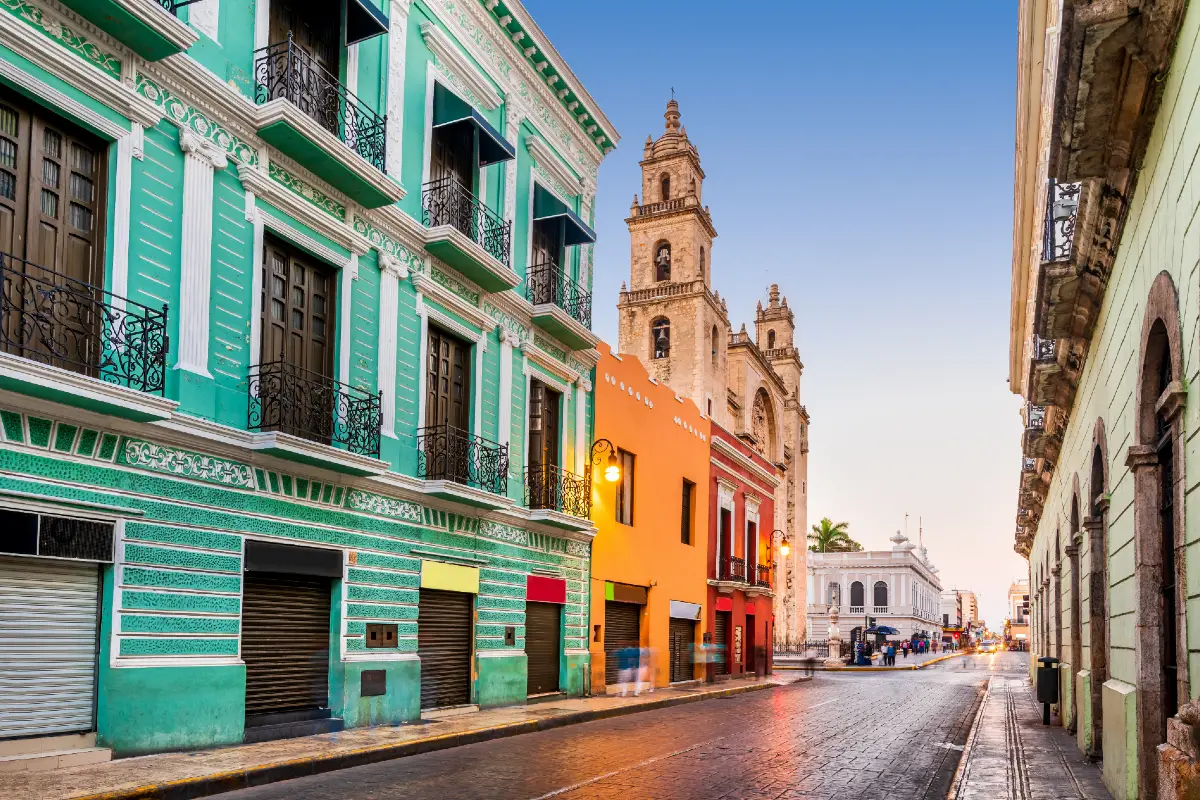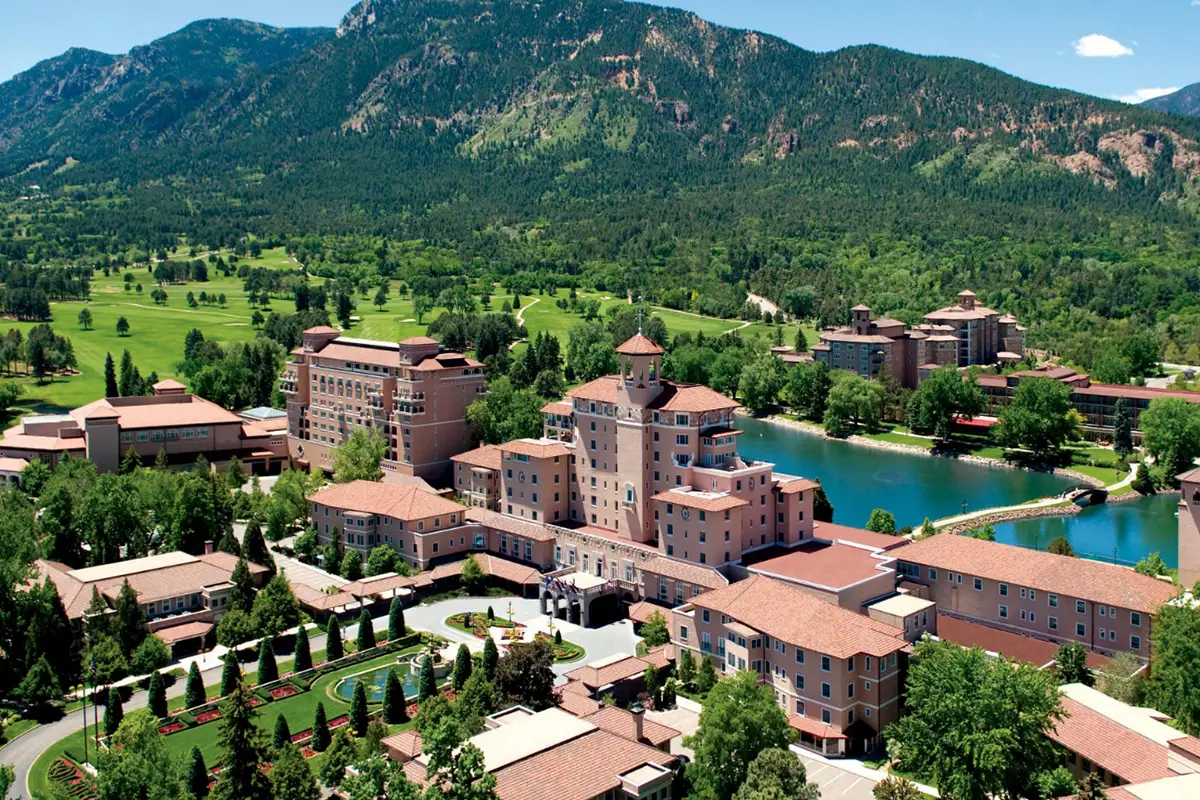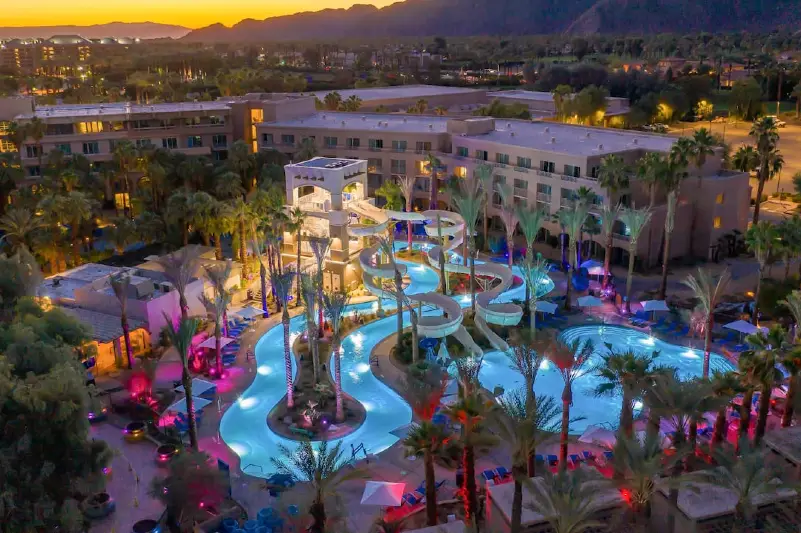As we dip our toes back into travel after a year of social distancing, it may feel hard to decide where to go and what to do first. Does a beach vacation sound most appealing or would you prefer an urban getaway focused on shopping, dining, and culture? Perhaps an escape to the country and days of waking to birdsong, dining on farm fresh meals, and exploring small towns is the trip you are dreaming of.
Mexico’s Yucatan Peninsula makes the process of picking a destination easier, as you can choose from all three of these holiday options in one place. It also offers the convenience of flying into and out of Cancun, with flights from more than a dozen American hubs. After you land, you just have to decide whether to drive south, to the beaches along the Riviera Maya; west, to the lively and charming capital of the state of Yucatan, Mérida; or into the countryside, for a stay at a sprawling hacienda reborn as a luxury hotel.
Escape to the Seashore
With its dramatic Maya ruins sitting atop a bluff overlooking the Caribbean and its small resorts strung along the sea, it’s not surprising that Tulum has become a favorite of those travelers looking for beach time in the winter but who aren’t interested in the mega-resorts of Cancun.

The plus of Tulum’s emergence as a destination has been the opening of new hotels and restaurants that have transformed what was once a sleepy backpacker destination into a decidedly stylish one.
Getting There: From Cancun it’s a straight shot south on a well-maintained highway. If you are driving, expect the journey to take between 90 minutes to two hours. There are also buses and shuttles, though renting a vehicle will give you the freedom to explore some nearby sites like the Sian Ka’an Biosphere and the Maya ruins at Coba, a much larger complex than the one in Tulum.
Where to Stay: Olas Tulum is a small B&B that has a very Tulum-like boho-chic atmosphere and attitude. A plus is that it is to the south of most of Tulum’s hotels—you can enjoy the quiet of the location for naps on the sand in the afternoon but when cocktail hour comes around it’s a short walk to Tulum’s other bars and restaurants.
Don’t Miss: Make sure to have at least one meal at Hartwood Tulum which helped lead Tulum’s transition from modest beach town to jet-setter destination. Chefs and owners Eric Werner and Mya Henry opened the restaurant in 2010 and it has made its way on to many “best-restaurant” lists thanks to dishes featuring farm-fresh produce from the Yucatan and seafood straight from the Caribbean in simple preparations that let the ingredients shine.
Country Living
Much of the Yucatan peninsula is dotted with haciendas that used to produce henequen (a fiber that is, in English, more commonly called sisal, after the port of Sisal where much of it was exported from). Sisal was essential to rope-making and huge fortunes were made growing the crop. The Mexican Revolution and, more importantly, the invention of nylon led to the bust of that boom though today many haciendas are enjoying second lives having been reborn as luxury hotels where you can spend days lounging by pools or visiting off-the-beaten path villages, convents, and Maya sites. You’ll fall asleep each night to the captivating sounds of the jungle wildlife at night.
Getting there: There are haciendas throughout the peninsula, though there tend to be more of them in the states of Yucatan and Campeche (on the northern and western sides of the peninsula—Quintana Roo, where Cancun is located, runs along its eastern side). You’ll want to rent a car if you intend to spend your days exploring the backroads, but most haciendas will happily arrange for transfers to their properties if you intend to spend your days relaxing on the grounds.

Chablé Yucatan
Where to Stay: Chablé Yucatan is the most luxurious of the reborn haciendas, though most accommodations there are in newly built free-standing casitas while the historic buildings house common areas, lounges, and restaurants. Hacienda Petac is an appealing smaller hacienda that is rented exclusively to one group at a time and can accommodate up to 14 guests. Marriott’s Luxury Collection includes five beautifully restored haciendas.
Don’t Miss: The Maya sites of Chichen Itza and Coba are world-famous, and the crowds at them are evidence of that. An advantage of a stay at a hacienda, however, is that it’s easier to visit some of the less-popular Maya sites. Uxmal, which is just over an hour south of Mérida, is one of the most magical of them. It is built in the so-called Puuc style which is known for being more decorative than other Maya styles with intricate carved geometric patterns and designs.

A City Escape
Mérida, the capital of the state of Yucatan (and the largest city on the Yucatan peninsula) has emerged in recent years as one of the most exciting cities in Mexico. It has long been known for its laidback pace and impressive collection of historic buildings spanning the 16th to 19th centuries (within Mexico, only Mexico City has a larger historic district). Now the city can also boast about its lively dining and shopping scene, supported by both a growing expat community and travelers who have discovered Mérida’s appeals.
Getting There: Mérida is roughly 3.5 hours from Cancun on a toll road. The colonial town of Valladolid and the Maya ruins at Chichen Itza are appealing stops en route. (It is also possible to fly to Mérida directly.)

Where to Stay: Mérida has an abundance of rental properties in historic homes that have been lovingly restored and you will want to check out the options on AirBnB and VRBO. If you prefer a hotel, the recently opened Wayam has a cool, contemporary style and also one of Mérida’s best new restaurants, Cuna, which serves delicious updated takes on Yucatecan cooking.

Don’t Miss: Mérida is not only a state capital but a culinary one too. It’s a place to sample both street food like the simple tacos served at stands at the Santiago Market (a small neighborhood market that is less intimidating than the central one) to the innovative Mexican cuisine of Picheta which overlooks Mérida’s cathedral and central square.
—John Newton, Founder, Signal Custom Content. (John previously worked as an editor at AFAR, Condé Nast Traveler, and Travel+Leisure and has written travel stories for many other publications and websites.)



